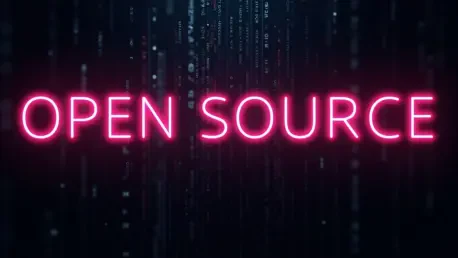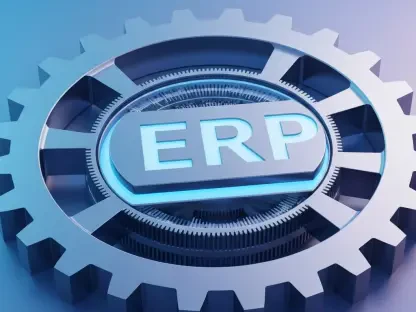Anand Naidu is known for his exceptional expertise in software development, particularly in open-source software licensing. His knowledge spans both frontend and backend development, offering deep insights into the evolving dynamics of coding languages and open-source frameworks. Recently, Redis’s licensing moves have captured the attention of developers worldwide, marking a significant return to open-source practices with the adoption of AGPLv3—a transformation led by Redis’s founder, Salvatore Sanfilippo, and his steadfast belief in open-source values. Our conversation with Anand aims to delve into the motivations and implications of this shift, explore the challenges faced with previous licenses, and examine future strategies to align Redis’s business interests with community expectations.
What prompted Redis to return to an open-source license after previously switching to proprietary models?
The decision seems rooted in a realization that proprietary models didn’t yield the expected financial benefits and led to dissatisfaction among developers. Redis learned that maintaining an open-source license helps foster innovation and collaboration, which are crucial for long-term success.
Can you elaborate on the specific challenges that Redis faced with the previous licenses, RSALv2 and SSPLv1?
These licenses were designed to curb the use of Redis by large cloud providers without contributions back to the project. However, they faced backlash because they were seen as restrictive and not aligning with true open-source principles. Eventually, the dissatisfaction culminated in a fork, Valkey, which gained popularity over Redis itself.
How did the decision to switch to the AGPLv3 license come about, and what were the key factors influencing this move?
The shift was influenced by many aspects, including feedback from within the company and community pressures. Salvatore Sanfilippo’s return played a pivotal role as he advocated for reembracing open-source ideals. AGPLv3 was chosen for its copyleft nature, allowing Redis to protect its code while ensuring any modifications remain open to developers.
What role did Salvatore Sanfilippo play in Redis’s decision to adopt the AGPLv3 license?
Salvatore Sanfilippo’s return to Redis was instrumental. His deep-rooted belief in open-source software drove Redis to adopt AGPLv3. He emphasized transparency and community involvement, ensuring Redis remains a platform that developers love and contribute to.
Can you explain the differences between SSPL and AGPLv3, and why AGPLv3 is seen as more favorable in open-source circles?
SSPL was never fully embraced as a valid open-source license because it imposed additional conditions perceived as restrictive. AGPLv3 is favored because it aligns better with open-source philosophies, requiring all network-accessible modifications to be shared, thus closing the “SaaS loophole.”
How does the AGPLv3 license address the ‘Software as a Service (SaaS) loophole,’ and what implications does this have for cloud providers?
AGPLv3 mandates that any software run over a network must have its source code disclosed, curbing the use of proprietary variations by cloud providers. This means cloud giants must either contribute their modifications back or negotiate a commercial license, promoting fairness and supporting Redis’s business model.
What responses have you received from developers and major cloud vendors regarding the AGPLv3 license?
Developer response has generally been positive given the open-source return. Major cloud vendors, however, might have mixed feelings due to its restrictive nature, yet they’re encouraged to either embrace the openness or contribute meaningfully.
Are there specific concerns about AGPLv3 being too restrictive? If so, how does Redis plan to address these concerns?
Some critics argue AGPLv3 is restrictive—mainly regarding code reuse and distribution. Redis aims to address these concerns by actively engaging with the developer community, providing clarity about contributions, and ensuring transparency around licensing benefits.
In what ways does Redis aim to build trust within the open-source community going forward?
Redis is focused on consistent community engagement, maintaining transparent communication, and demonstrating commitment through regular updates and contributions. Sustaining trust involves showing reliability in promoting open-source principles and fostering collaboration.
What are some of the significant performance improvements and new features introduced in Redis 8?
Redis 8 boasts significant enhancements such as latency reduction by up to 87% with certain commands. It introduces vector sets designed to optimize AI workloads, aligning functionality with modern computational demands.
How do these improvements align with the needs of your current user base, particularly in supporting AI workloads?
These features reflect a keen understanding of user demands—particularly AI workloads that require efficient processing capabilities. The adoption of vector sets ensures Redis remains relevant and supportive of cutting-edge developments.
How does Redis plan to balance its business interests with supporting the open-source community under the AGPLv3 license?
Redis plans to uphold business interests by driving both community contributions and commercial collaborations. Balancing involves leveraging AGPLv3 to protect the code while fostering wide-scale adoption and innovation within the community.
What role does marketing play in Redis’s decision to return to open-source licensing, and how does this impact customer perception?
Marketing aims to bridge Redis’s return to open-source with its brand identity, emphasizing values like transparency and collaboration. Commendable open-source credentials positively impact customer perception, enhancing company trustworthiness.
How is Redis responding to critics who view the switch back to open-source as merely a marketing strategy?
Redis counters skepticism by focusing on tangible open-source contributions, building genuine community relationships, and showcasing the benefits of AGPLv3 through real-world applications rather than mere promotional rhetoric.
What steps is Redis taking to retain major sponsors like Amazon and Google in light of the AGPLv3 license adoption?
Redis seeks to retain key sponsors by fostering cooperative dialogues, incentivizing contributions, and illustrating mutual benefits within the AGPLv3 framework, ensuring healthy partnerships despite licensing shifts.
How does Redis plan to ensure ongoing contributions from large cloud providers while operating under AGPLv3?
Redis plans to engage cloud providers through transparent licensing agreements, align contributions with strategic goals, and offer commercial licensing terms that benefit all parties involved, encouraging active support.
How important is the open-source identity to Redis’s overall business strategy and future developments?
Redis views open-source identity as integral to its strategic framework—fueling innovative advancements, solidifying community trust, and ensuring sustainable growth. It is central to long-term success.
Do you have any advice for our readers?
Embrace open-source projects with a spirit of collaboration. Engage actively, contribute meaningfully, and prioritize transparency, which collectively advances technology and fosters community growth.









